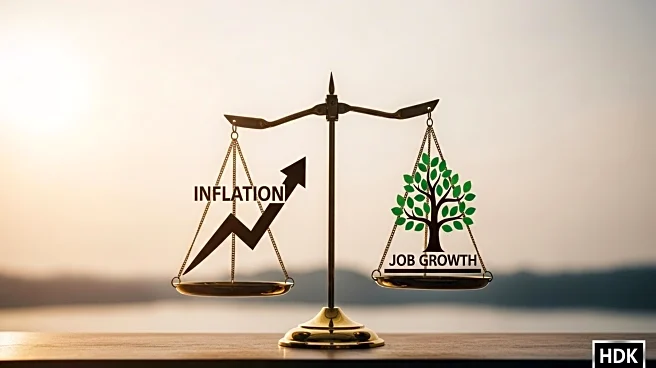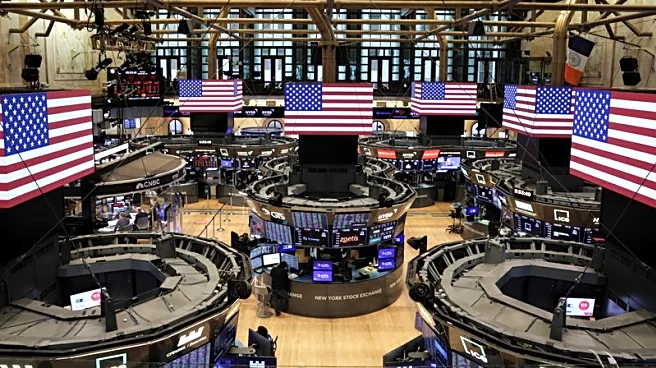What's Happening?
Federal Reserve officials are expressing differing opinions on the pace and necessity of interest rate cuts. Governor Michael Barr emphasized caution due to inflation risks, suggesting skepticism towards aggressive rate reductions. Barr highlighted the potential impact of tariffs on inflation and the need for careful policy adjustments. Meanwhile, San Francisco Federal Reserve Bank President Mary Daly pointed to a softening labor market and inflation concerns as reasons for last month's rate cut, indicating that further cuts might be necessary. The Federal Open Market Committee's minutes reveal a cautious approach, with skepticism about delivering more rate cuts this year than anticipated.
Why It's Important?
The differing views among Federal Reserve officials highlight the complexity of balancing inflation risks with economic growth and labor market conditions. The cautious stance on rate cuts reflects concerns about inflation potentially rising due to tariffs, which could impact consumer prices and economic stability. The labor market's softening adds pressure on the Fed to manage risks effectively, as further rate cuts could stimulate economic activity but also risk exacerbating inflation. The outcome of these discussions will influence monetary policy decisions, affecting financial markets, consumer spending, and overall economic growth.
What's Next?
The Federal Reserve is likely to continue monitoring economic indicators closely, including inflation rates and labor market conditions, to determine the appropriate course of action. The upcoming rotation of FOMC members may introduce more hawkish views on interest rates, potentially influencing future policy decisions. Stakeholders, including businesses and investors, will be watching for signals from the Fed regarding its approach to rate cuts and inflation management, as these decisions will have significant implications for economic stability and growth.











